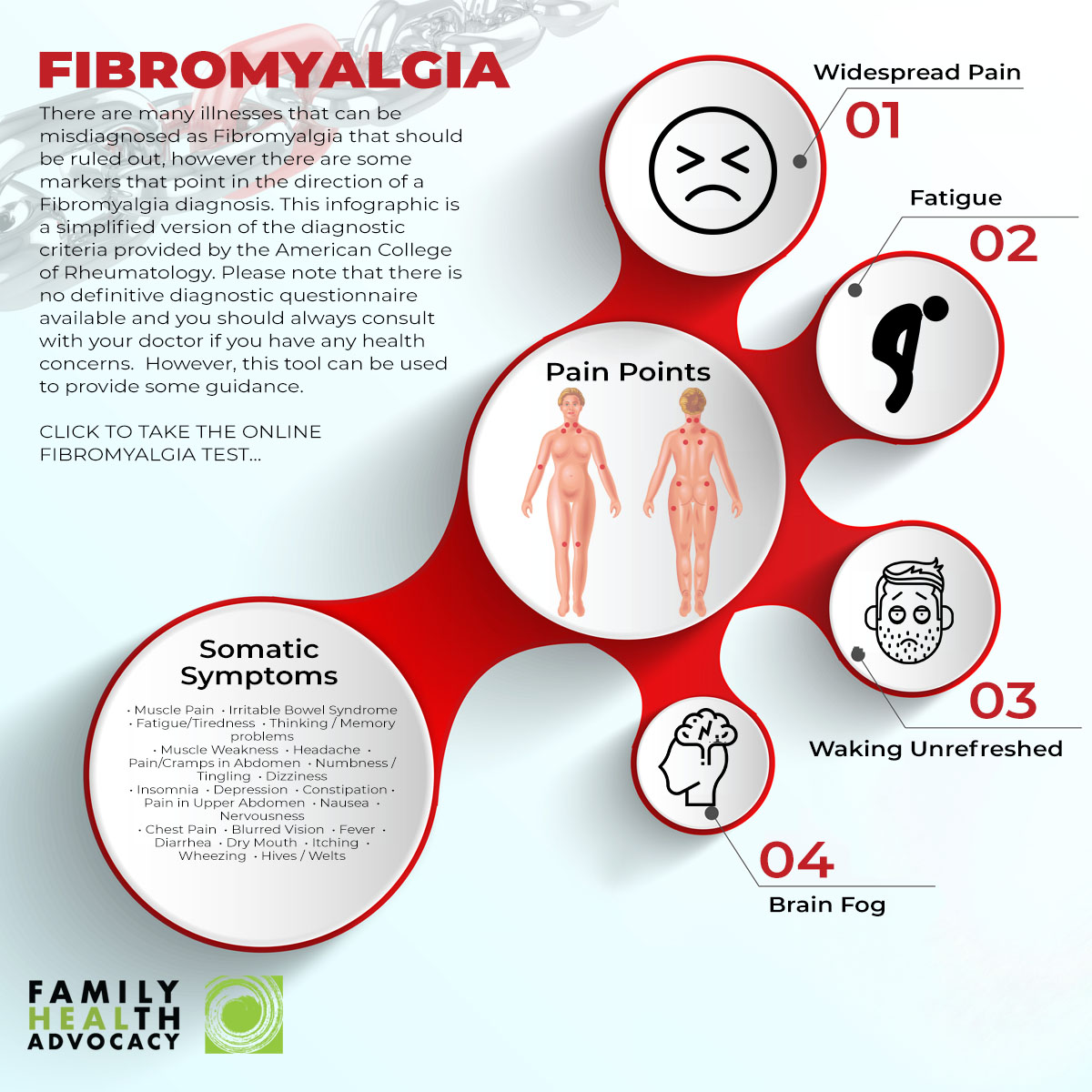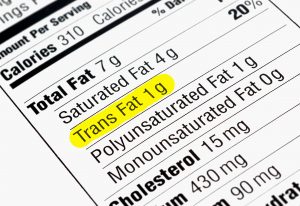Dr. Morgan:
Are you suffering from fibromyalgia or the severe symptoms of fibromyalgia? Or symptoms that are associated with fibromyalgia, like chronic pain? Are you suffering from things like numbness and tingling? Headaches? Lack of energy? Chronic fatigue? Brain fog?
Dr. Casey:
Some people who have been diagnosed with fibromyalgia also experience other symptoms like;
- Digestive problems
- Back pain
- Neck pain
- Anxiety
- Depression
There’s all sorts of different symptoms associated with fibromyalgia. What’s worse then the actual symptoms is how they affect your life. For a lot of people they find it very difficult to go out and enjoy the day with their family and friends when they’re suffering from fibromyalgia.
Do these mild to severe fibromyalgia symptoms resonate with you? Do you want to know if you may have fibromyalgia? Take our full Fibromyalgia Test
Dr. Morgan:
It’s really difficult to just be a part of your family. If you have children, it can become difficult to take care of them which obviously puts a huge burden on relationships. Sometimes you feel like a burden because you’re in chronic pain and not able to participate in family activities.
Dr. Casey:
And some people feel that they are a burden because sometimes there’s so much chronic pain and they have such severe fibromyalgia symptoms, they have a difficult time being able to work or support the family. These symptoms can also be frustrating because it limits your ability to play sports and enjoy hobbies.
Dr. Morgan:
Some of our patients explain that they feel like getting out of bed in the morning is the biggest task in the world. Others have so many symptoms that it limits them from being able to drive or it takes away the confidence to do so safely. As a result, they are often left feeling isolated and hopeless.
Dr. Casey:
Eventually they get to a point where they want to seek help. A lot of sufferers will go out and seek a doctors help. They want to figure out what’s going on with their body. They want answers.
Some people have gone to doctor after doctor, after doctor and are left frustrated. Often times, even though they are experiencing all of these symptoms, the doctor reports there’s nothing wrong or that they have Fibromyalgia.
Dr. Morgan:
What is frustrating for most people about the diagnosis of fibromyalgia is people always wonder what caused it?
Dr. Casey:
Exactly, and quite frequently doctor’s say there’s no cause. Or even worse, there’s no cure.
So you get this diagnosis but it’s of very little help. There are so many questions but the diagnosis offers little to no answers.
Dr. Morgan:
If anything it offers a feeling of being shackled to a diagnosis and feeling more helpless than you did when you went in to see the doctor.
Dr. Casey:
Typically if you go the medical route, there are approved medications that are prescribed to fibromyalgia sufferers such as;
There are people that do experience some benefit from these medications. However on the whole, the fibromyalgia community are unhappy with this being the only solution.
First off, medications can be dangerous. Secondly, in most cases, they are not effective.
I know that people are looking outside of the medical world and they’re looking for a solution to the actual underlying problem.
Dr. Morgan:
When someone is diagnosed with mild to severe fibromyalgia they often feel helpless. They maybe have a medication that might be giving them some relief or no results. This can be frustrating. However, even more frustrating is telling their family;
“I’ve been diagnosed with fibromyalgia”
And hearing crickets. Having nobody understand you. Even worse, having people think it’s all in their head.
Dr. Casey:
Here’s the problem. You can be diagnosed with fibromyalgia but you look good or you look “normal”. Just look like everybody else. Thus, people can’t really identify with the fact that you’re suffering with all these different symptoms. In many cases your own friends and family don’t believe you and say it’s all in your head.
Dr. Morgan:
Imagine this; You have a condition you’ve been diagnosed with. You don’t know what the underlying cause is. Don’t have a straightforward cure or solution for it.
You are given a medication that gives you little to no results along with potential side effects. Your family doesn’t understand and you’re feeling alone and helpless. At this point you’re desperately looking for answers.
If you go to the bookstore there might be a handful of books on fibromyalgia. When searching online, you don’t know which information you can trust and what resources you should use.
This is why we have created an online community for people affected by fibromyalgia.
Hey Dr. Casey, I guess at this point we should let them know who we are!
Dr. Casey:
I’m Dr. Casey, I’m a doctor of Natural Health. This is my sister, Dr. Morgan. We’ve been practicing together over the last 10 years so we have years of experience dealing with patients with mild to severe fibromyalgia.
The reason why we are starting this community and filming videos is because fibromyalgia is one of the most frustrating, misdiagnosed and misunderstood conditions people are dealing with today.
People are searching for answers. A lot of our patients are asking us to help people they know located around the globe because they have had great results in our office. As a result, we have created a community where people can join in and be with other people who are in a similar situation. At the same time provide a resource for people to get help from us and other doctors we work with all over the world.
Dr. Morgan:
So that is one of the reasons why we created the Family Health Advocacy community.
Dr. Casey:
Family Health Advocacy is a natural health website and social community with loads of original content from contributing healthcare practitioners around the world. Our goal is to help you and your family get healthy. However, today specifically we’re here to talk about Fibromyalgia.
Dr. Morgan:
I think what really draws us to fibromyalgia is that in practice we’ve helped so many people affected by it. We have handed them Kleenex while they open up and tell us about their lives. We’ve had people very close to us experience chronic pain and fibromyalgia. Sadly, we’ve also witnessed lives be destroyed.
On the other end of things, through our care, resources and tools that we’ve been able to provide, we’ve seen many lives be restored. That is what absolutely fulfills us. This is why we are so excited to provide resources worldwide and not just to our local community.
Dr. Casey:
And, it’s important that we start helping people worldwide because this is a condition that crosses all borders!
Dr. Morgan:
The statistics around fibromyalgia are jaw-dropping. 2 out of every 100 people here in North America experience fibromyalgia and chronic pain. That’s 6% of people worldwide.
Dr. Casey:
Which equates to 450 million people suffering with fibromyalgia world wide. It is a fact that women tend to suffer the most. At least 70 % of fibromyalgia sufferers are women. And what’s crazy is that because everything is online now, we know that over a million people are Googling fibromyalgia online every single day.
Click here to read, “Fibromyalgia Symptoms Affect Mostly Women”.
Clearly there’s a lot of searching for answers and this is what we plan to provide for everyone.
Dr. Morgan:
It’s confusing because fibromyalgia is also coined the “copycat” diagnosis. One statistic I’ve came across reported that two-thirds of mild to severe fibromyalgia diagnoses are actually misdiagnosed.
It could be misdiagnosed with other conditions like;
So we’re here to help clear up some of the common misunderstandings. Help people find the help that they need.
We have the experience to help point people in the right direction and provide the right tools. We have started putting out Facebook live videos discussing different aspects of the condition.
















